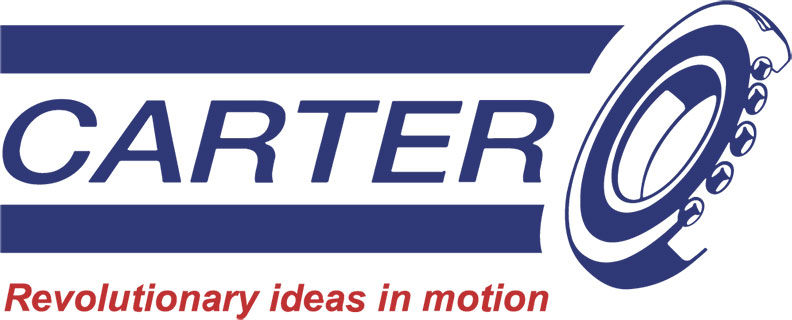The pressure to reduce greenhouse gas emissions continues apace as does the search for ‘greener energy solutions’ and one of the consequences of this is significant growth in the use of Liquid Natural Gas for marine applications. LNG has long been regarded as a sustainable fuel and has gained significant traction as a viable alternative for a wide range of commercial transport applications, including marine and shipping. It is estimated that 3% of global greenhouse gas emissions such as carbon dioxide is generated by maritime traffic which is why the International Maritime Organisation (IMO) is increasingly looking to reduce CO2 emissions. Whilst LNG is a much ‘greener’ fuel than the highly viscous diesel fuels typically used to power container ships and cruise liners, it does present significant challenges to fuel systems and pumps, specifically dealing with extreme (cryogenic) temperatures.

Overcoming the Challenges
A vital component in LNG pumps are bearings which have to withstand the extreme temperatures of being fully submerged in Liquid Natural Gas at temperatures ranging from (-196ºC / -320ºF), or in Liquid Hydrogen (-253ºC / -423ºF). Oxfordshire based CARTER MANUFACTURING is acknowledged as a first choice global supplier or precision bearings and offers decades of experience in supplying proven bearing solutions for cryogenic applications. As fuel systems approach operating temperatures of absolute zero (0ºK) the ability to utilise liquid lubrication becomes increasingly challenging, which means dry running bearings are mandatory. ‘Standard’ steel bearings (rated 52100 Chrome Steel) are simply ineffective, offering poor performance resulting in short service life and unexpected breakdowns.
In addition to the challenges of lubrication the expansion and contraction of the different materials used in the bearing housings (as aligned with the coefficient of the required thermal expansion) becomes even more critical for bearing efficiency.
Moreover, balancing the pump system, to account for the contraction of the materials, is essential. Therefore, choosing a bearing supplier who can offer the extensive specialised ‘cryogenic’ experience will help you to overcome these challenges. In addition to lubrication issues, special material selection and heat treatment processes is essential to help ensure that warping or non-linear contraction of the bearing components doesn’t occur. This includes additional cryogenic heat treatment processes and other proprietary considerations to help achieve the best possible results.
Choosing the Right Materials
Bearing cage failure is a common occurrence in cryogenic applications so material selection, in addition to cage design, is critical to performance. Many common engineering plastics become too brittle at cryogenic temperatures, which is why Carter offers the expertise in utilising the best bearing materials. These include lower cost options such as PEEK and PTFE with custom additives, or even Durafilm or PCTFE can be specified if necessary.
Additionally, materials at these cryogenic temperatures become increasingly brittle so the cage geometry is also critical. Carter has developed a proprietary two-piece riveted cryo cage design for deep groove ball bearings that has dramatically increased performance. As mentioned previously, standard 52100 bearing steel is inadequate for cryogenic applications, so partnering with a cryogenic expert like Carter adds value and enables customers to exploit their decades of experience.
What about Lubrication?
Traditional bearings used in lower temperature applications operate effectively with liquid lubricants creating a thin film between the steel rolling elements which minimises metal-to-metal contact and the resulting risks of micro-welding adhesion. However, this is not possible for bearings operating in applications involving cryogenic temperatures. Carter’s solution is to offer ceramic bearings, such as silicon nitride which not only removes the need for liquid lubricants but also significantly reduces the mass and increases the bearings speed capabilities. This, in conjunction with the application of a dry film lubricant such as tungsten disulphide (rated AMS2530) are the other important factors for cryogenic bearing success.
Cryogenic Bearing Testing
Depending on the specifics of each individual project being met and your confidence that all the ‘right’ choices have been made, how do you know if your cryogenic bearing is going to be suitable to meet the demands of your application? At this stage of the manufacturing process testing is crucial which is why Carter has developed proprietary cryogenic testing procedures to minimise the risks - before your bearings even arrive on-site. All our cryogenic bearings undergo a strict testing procedure where they are fully submerged in Liquid Nitrogen (-196ºC / -320ºF) which represents an even more robust test than submerging in LNG as this involves lower temperatures. The bearings also undergo performance torque and dimensional analysis, helping to ensure optimal performance for your application.
Conclusions
Switching to ‘greener’ energy options and helping to reduce greenhouse gas emissions continues apace, as proven by Carter’s involvement in the significant expansion of LNG projects for the marine sector. LNG as a marine fuel meets all the current IMO and EU regulations and switching to it means complete removal of Sox and particles, along with a reduction of Nox emissions of up to 85%. The result is a reduction in CO2 emissions by at least 20%.
Carter’s large market share ensures an extensive stock of cryogenic bearings enabling customers to choose the best design and materials to suit their application. In addition, Carter’s expertise and established procedures including; proprietary heat treatment, strict internal quality controls and rigorous testing procedures confirm why they are regarded as one of the premier suppliers of cryogenics bearings.
More at: https://www.carterbearings.co.uk/bearings/cryogenic-bearings











FLIR Si1-LD Acoustic Imaging Camera for Compressed Air Leak Detection Offers Higher Performance at Accessible Price Point
Interesting … at a guess, this may exploit the Joule-Thomson effect of an expanding gas. The calibre of engineer who would take an interest in...